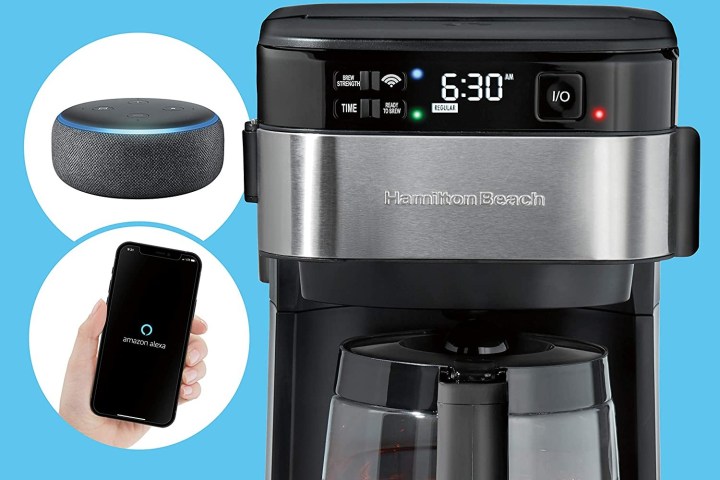Have you ever given any thought to what the word ‘smart’ truly means? At its most basic, it denotes someone who is clever, quick-witted, or very intelligent. But what about when it comes to a smart device? The dictionary (or Alexa, if we’re being honest) would say a smart device is one that’s programmed to be capable of some type of independent action. The keywords there are “some type.” That’s the trouble with smart devices, gadgets, and appliances: “smart” isn’t a universally understood or regulated feature.
Too often, manufacturers, in a bid to sell more gadgets, tack on the word smart in front of any old device. Today’s savvy consumer asks what exactly that means. Is it a clever feature? Wi-Fi connectedness? A companion app? All of the above? Or does something as simple as adding an LED touchscreen to an appliance make it smart?

What is ‘smart’?
A ‘smart’ device can mean myriad things depending on the manufacturer. It can be a TV that has Wi-Fi or a smart speaker that can listen and respond to your queries. It can even be a gadget with a companion app. But what kind of smarts are you really getting, and is the technology useful and effective?
Smart but not smart
What about when it comes to smart kitchen gadgets in particular? Let’s take the example of a smart toaster. In the last few years there have been two significant launches of so-called smart toasters: the Revolution Instaglo and, more recently, the Tineco Toasty One.
These toasters are marvels of design and beauty and boast bright touch screens and toasting technology that promises crispy carb perfection. In truth, these are regular toasters with the addition of an LED touchscreen display. That’s it. No Wi-Fi, no “Hey Google, hit me with some toast,” and no tiny robotic arms that can retrieve sliced bread, grill it to perfection, then butter it for you. So while the addition of a glowing screen is nice and may allow you a few more options than a dial numbered one through six, in my book, this doesn’t truly constitute genuine smarts.
They’re also much more expensive than their “non-smart” counterparts — and while they might look fancy, their still just a toaster. In other words, most smart toasters aren’t worth your time or money.

Smart kitchen appliances aren’t smart in the same that an Amazon Echo smart speaker with a screen is truly smart. An Echo is connected to the web and can listen for you and respond appropriately. It can manage your schedule, turn on lights and adjust a thermostat, and even order supplies from Amazon for delivery.
However, even internet connectivity is no guarantee of a better gadget. Is, for example, a smart TV that allows streaming truly any more valuable than simply plugging in an external streaming TV dongle?
Some gadgets even put ‘smart’ in the name without ever actually adding intelligence, automation, or connectivity. One example is the Click and Grow Smart Garden, which is a great indoor winter garden for growing herbs and lettuce but it has no Wi-Fi, no connection, and no automated watering. It does, however, have an app that will send you push notifications reminding you to refill your water each month. So where is the ‘smart’ in that?

NutriBullet made the Balance Blender which has a Bluetooth connection to a companion app. The app supplies recipes and works with a built-in scale to help you weigh ingredients in the recipe accurately. Pretty smart. There’s a smart toothbrush that will use your phone’s camera to watch you brush your teeth and give you a full report. Alexa-enabled coffee makers also already exist and allow you to call for your morning java from the comfort of the covers.
But there’s another consideration about these smart appliances: do we need that much help with basic tasks?
It’s possible to brush one’s teeth in two minutes without an app and without connecting to Wi-Fi, and while a camera-based brushing assessment might be nice for a check-in once in a while, it’s not the type of technology you’re going to want to use twice each day since it adds time and additional steps. Same deal with the Bluetooth blender; it might be helpful to have the built-in scale display weight on your smartphone the first time you make a recipe, but will you really need it after that? And while a digital touch screen is fun to watch while you’re waiting for toast, is it worth the literally hundreds of additional dollars you’ll spend?
As it stands, most smart kitchen appliances simply aren’t “smart” enough to recommend. Touchscreens and smartphone apps are great, but do they really make your life significantly easier?
A robot vacuum can save you hours of time every week. A video doorbell helps keep your home secure. Smart locks offer flexibility for large families. These smart gadgets bring massive improvements to your life and justify their price tags. But is a $300 toaster with a touchscreen really that much better than your $30 toaster from five years ago?
More and more kitchen gadgets are adding smart to the name. Don’t blindly buy the hype. It’s up to us as consumers to understand exactly what we’re really getting and decide if it’s truly worth it. And until kitchen appliances start to introduce “smart” features that actually make your life easier, there’s not a whole lot to get excited about.
Editors’ Recommendations

